
Geosecure
Telematics
Unlock your fleet's potential with advanced GPS tracking and telematics tailored for vehicles, electric vehicles, and heavy machinery. Through Geosecure, access Geotab's cutting-edge technology and telematics fleet management Sydney, Brisbane, Canberra and other major cities in Australia to optimise performance, protect assets, and enhance driver behaviour.


Fleet Management Solutions From Geosecure
Learn more and click on the icons below
Productivity
Fleet Optimisation
Safety
Sustainability
Compliance
Expandability
Productivity
Accurate Vehicle and Plant Tracking
Geotab's fleet management software, provided by Geosecure, captures precise data on vehicle location, speed, trip distance, and more. GPS tracking starts recording the moment you begin driving, even if your vehicle is parked indoors or underground. The GO9 device, equipped with the Global Navigation Satellite System (GNSS) module, delivers faster latch times and highly accurate location data. Whether you're looking for fleet tracking Sunshine Coast or advanced fleet management solutions in other major cities of Australia, Geosecure offers the tools you need to optimise your fleet’s performance and efficiency.
Routing and Planning
With Australian fuel prices contributing to significant operational costs, optimising your fleet’s routes is crucial. Geosecure’s planning tools help you set up efficient stops, monitor zones, and streamline routes to save time and fuel. Ensure your fleet operates efficiently, reducing costs and meeting customer commitments.
Driver Behaviour
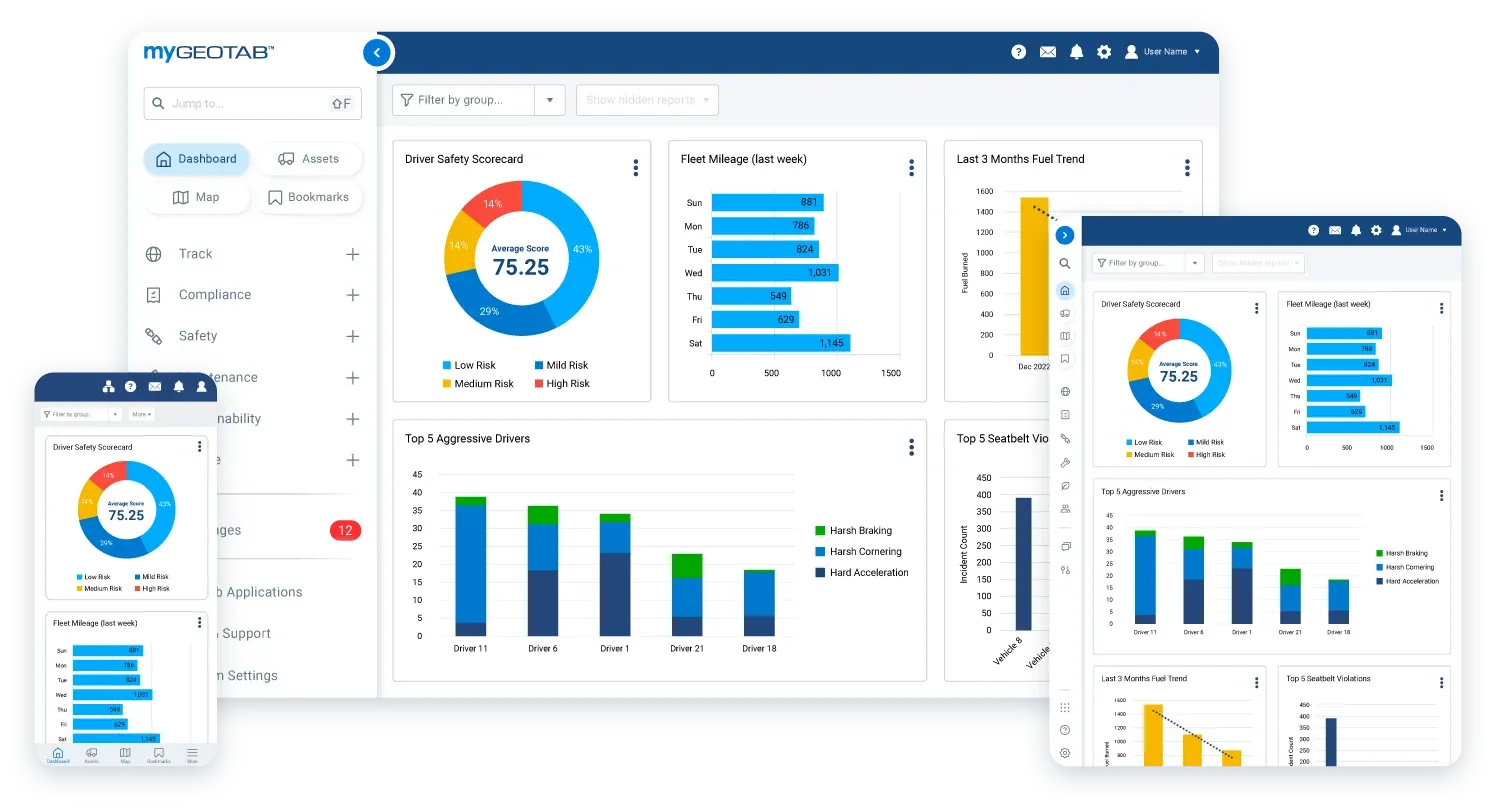
Monitor driver behaviour with Geosecure to improve fleet safety and reduce costs. You can:
- Track driving habits: Ensure drivers are operating vehicles safely and effectively.
- Generate detailed reports: Review performance data to make informed decisions.
- Receive real-time notifications: Act quickly to address unsafe driving behaviours.
This proactive approach can help reduce fuel consumption by up to 15%, significantly lowering operational costs with Geotab Gold Coast, Brisbane, Sydney, Melbourne -
Fleet Optimisation
Fleet Maintenance Tools
Geotab's fleet tracking solutions, offered by Geosecure, streamline fleet maintenance and diagnostics, helping you reduce vehicle downtime and administrative costs while catching engine issues early.
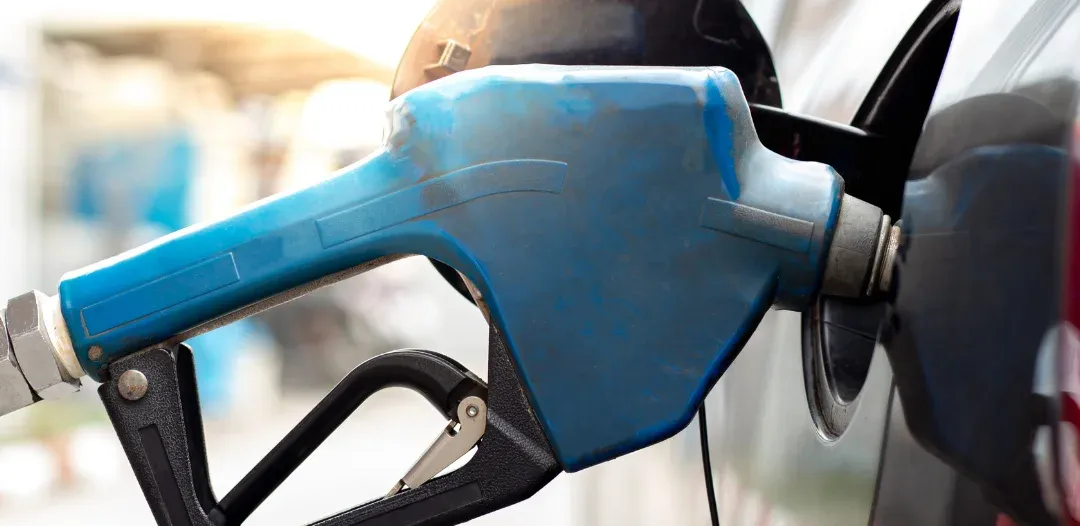
Fleet Maintenance Tools Include:
- Remote diagnostics
- Inventory management
- Predictive maintenance
- Maintenance scheduling and reminders
- Work order management
- Maintenance cost reports
Geotab has been designed to help you maximise your fleet uptime - book a demo today.
Driver Behaviour
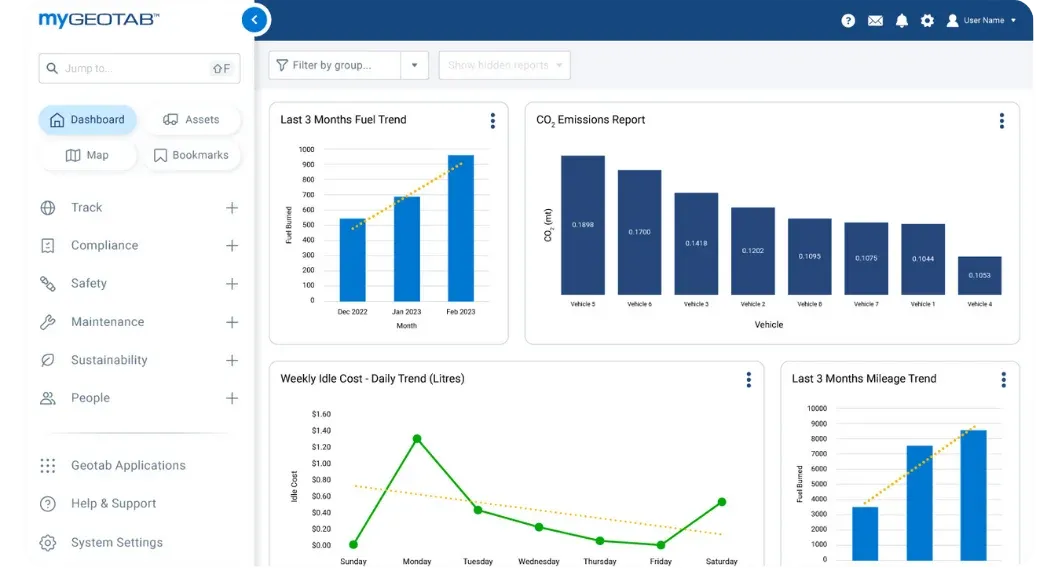
Ensure optimal efficiency and maximise uptime for your vehicles and plant assets with Geosecure's real-time reporting and analytics. Identify over-utilised or under-utilised assets and keep maintenance and lease costs within budget through accurate odometer and SMU hours reporting. Ensure the right asset is on the right job with the right operator.
Simplify the management of pooled and shared vehicle fleets with Geotab Keyless, available through Geosecure. Control secure vehicle access for authorised users from anywhere, even when vehicles are parked out of cellular coverage.
Fuel Management
Gain complete visibility into your fleet's fuel usage with Geotab, available through Geosecure. By connecting to the Geotab platform, you can monitor trends in fuel consumption and fill-ups while accessing critical engine data to stay ahead of maintenance needs. Integrate your fuel cards into MyGeotab to monitor transactions by fuel type and location. Set up rules and notifications to manage speeding and idling effectively, helping you optimise fuel efficiency.
Key Fuel Metrics to Track:
- Fuel consumption (fuel used and fuel used when idling)
- Fuel economy (the actual MPG)
- Fuel level
- True idling
- Engine faults, such as faulty oxygen sensor
Safety
Collision Detection & Reconstruction
Stay informed in real-time with Geosecure's collision detection feature. Receive immediate alerts when a suspected collision occurs, allowing for a quick response. Forensic data from the Geotab GO9 telematics device is automatically uploaded, providing essential details for incident investigation and reconstruction.
Seatbelt Usage
Enhance fleet safety with Geosecure's monitoring of seatbelt usage via the Geotab GO9 telematics device. Track and report on seatbelt usage for both drivers and passengers, identifying areas of risk within your operations. Use this data to ensure compliance and protect your drivers and vehicles.
Driver Behaviour Driver Behaviour
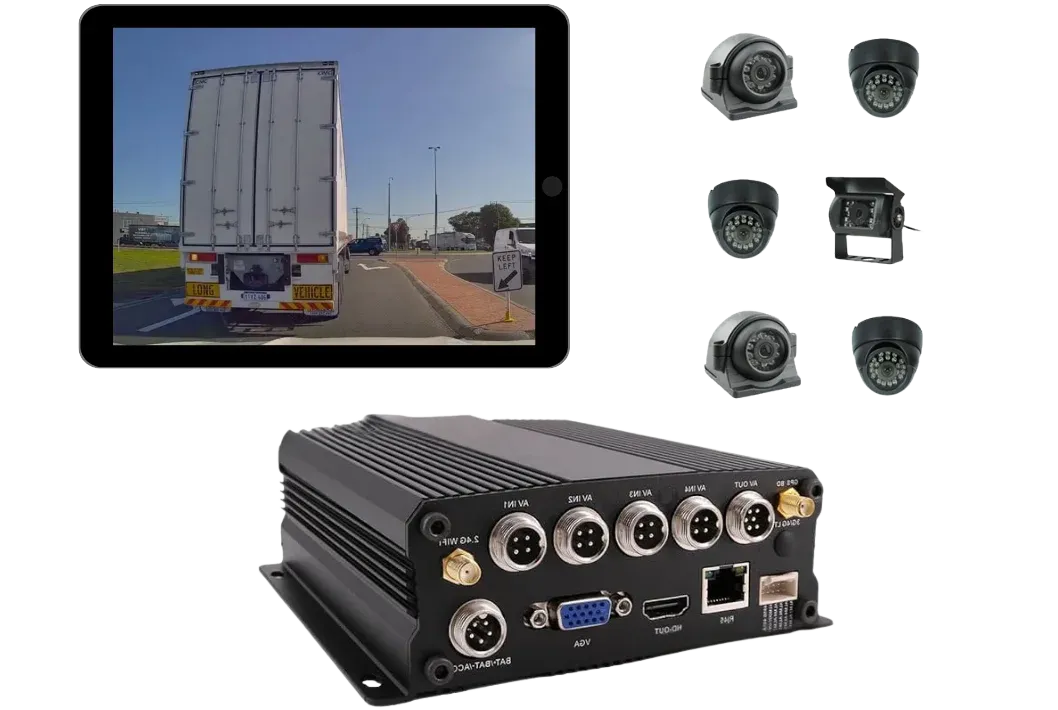
Seamlessly integrate camera solutions with Geosecure's fleet management software to gain clarity on incidents. Capture high-definition footage for thorough incident investigations and protect your business against fraudulent claims. Fleets using these systems have experienced a 75% reduction in third-party claims and a 70% increase in team productivity.
Driver Safety Reporting
Gain a comprehensive view of your fleet's safety performance with Geotab's control tower feature, available through Geosecure. Monitor key metrics to understand driving habits and reduce incident rates. Utilise focused safety dashboard reports, safety alerts, and advanced collision avoidance systems to prioritise safety across your fleet. Fleets implementing these tools have seen up to a 54% drop in incidents.
Key Features of Driver Safety Reporting:
- Safety dashboard reports
- Real-time safety alerts
- Advanced collision avoidance systems
Sustainability
Take Your Fleet into the Future with the EV Suitability Assessment (EVSA)
Prepare your fleet for the future by identifying the best vehicles to electrify with Geotab's EV Suitability Assessment (EVSA), available through Geosecure. This simple report uses your actual telematics data and vehicle histories to match your fleet vehicles with the right EV models, ensuring they meet operational demands, even in harsh weather. Quantify cost and pollution savings to build a strong business case for modernisation.
Identify Patterns in EV Charging
Understand when and where your EV fleet vehicles are charging, how long they remain at charging stations, and the amount of charge gained with Geosecure's EV Charging Report. Go beyond simple battery percentages to identify opportunities to better utilise your fleet assets and improve overall efficiency.
Keep Track of Your Energy Use: Fuel or Electric

Geotab's Fuel and EV Energy Usage report, accessible via Geosecure, allows you to monitor and compare the performance of both EVs and traditional vehicles in one place. Track battery usage patterns, streamline charging processes, and identify any Plug-in Hybrid Electric Vehicles (PHEVs) operating solely on fuel to optimise vehicle allocation.
Key Features of Energy Tracking:
- Compare EV performance against traditional vehicles
- Monitor battery usage and streamline charging
- Identify PHEVs operating on fuel alone
Compliance
Vehicle Pre-Start Checks
Ensure your fleet's safety and operational compliance with Geotab, available through Geosecure. Use user-friendly tools to capture vehicle inspection and pre-start checklist results electronically. Record compliance issues and non-conformances directly into your fleet management system, simplifying maintenance management and keeping your fleet in top shape.
Key Features of Vehicle Pre-Start Checks
- Electronic capture of inspection results
- Direct recording of compliance issues
- Simplified maintenance management
- Identify minor problems before becoming major
- Provides accountability for drivers and staff
Investigate and Digitally Reconstruct Vehicle Collisions
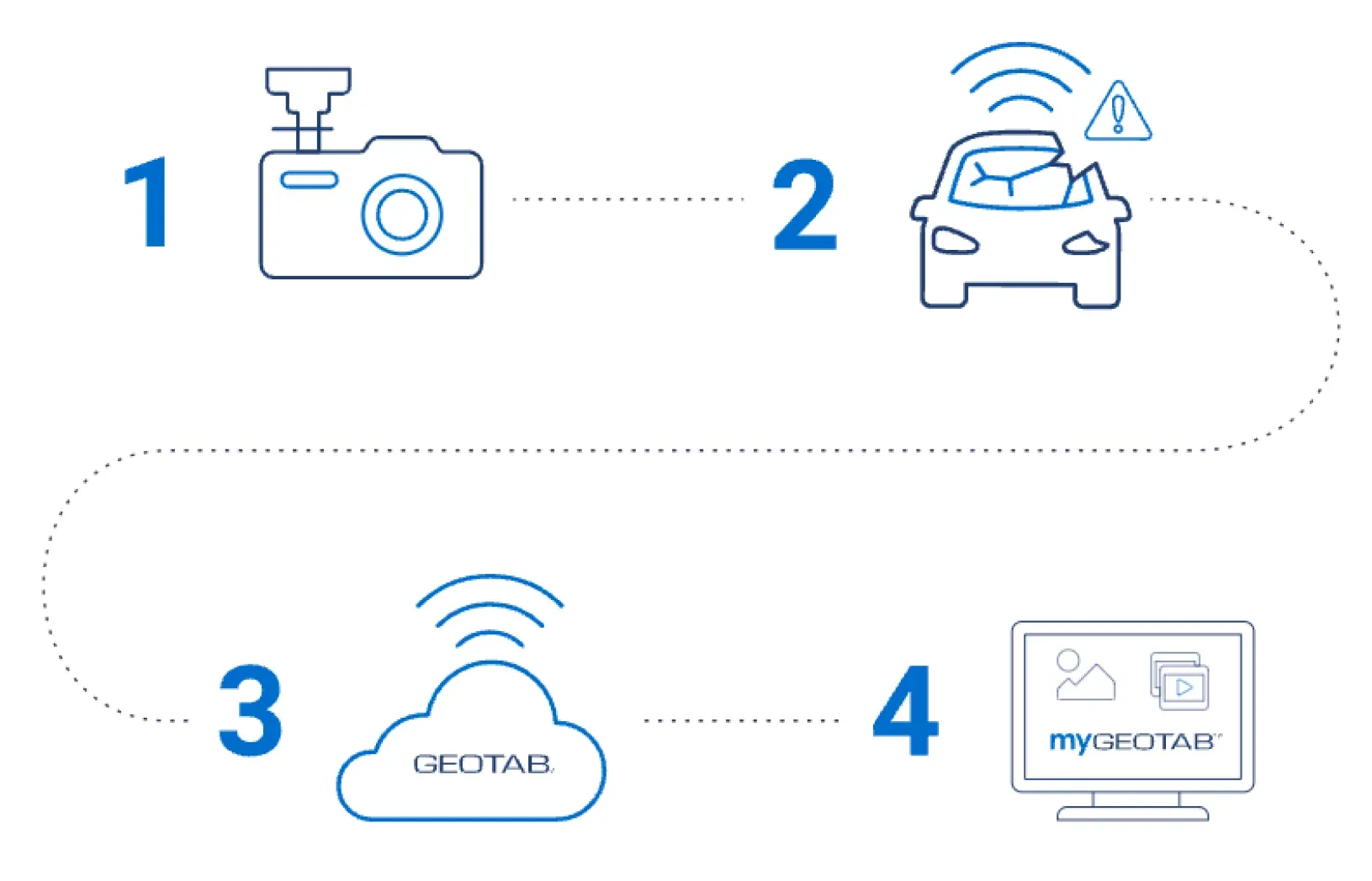
Utilise Geotab's comprehensive vehicle data and cloud-based fleet management solutions, available through Geosecure, to investigate and digitally reconstruct vehicle collisions. This data can help identify the causes of incidents, support insurance claims, and ensure both driver and public safety, all while protecting your company's reputation.
Avoid Fines for Speeding and Other Traffic Infringements
Manage road user safety and avoid costly fines with Geotab's rules, alerts, and notifications. Set up alerts to notify drivers when they exceed speed limits, using GO TALK for audible reminders. Customise notifications to be sent via text, email, or desktop alerts, and use these tools to coach drivers and reduce the risk of receiving infringement notices.
Manage Your Fuel Tax Credit by Leveraging Data
Maximise your Fuel Tax Credit by accurately tracking where and how your fuel is used. Geotab, in partnership with Geosecure, provides the detailed data you need to ensure that fuel used off-road, on private roads, or for untaxed applications is properly reported to the ATO, enabling you to claim the maximum rebate.
Expandability
Expand Beyond Vehicle Tracking with a Scalable Platform
Maximise your telematics potential with Geotab IOX Add-Ons, available through Geosecure. Expand your solution to enhance all aspects of your telematics system. Connect additional hardware to unlock new features, such as alert buttons, Bluetooth beacons, adapters, harnesses for different vehicle models, and GO TALK in-vehicle driver feedback.
Collect More and Better Data on Your Fleet Activity
Integrate additional sensors and solutions into your vehicle tracking to monitor complex activities in the field. Expand your tracker's capabilities to identify drivers, provide in-vehicle coaching or alerts, and monitor unique vehicle systems like lifts, arms, or temperature controls. Geotab's suite of hardware extensions supports multiple protocols, both wired and wireless, ensuring you capture the most comprehensive data on your fleet's movements.
Flexible In-Vehicle Hardware Extensions
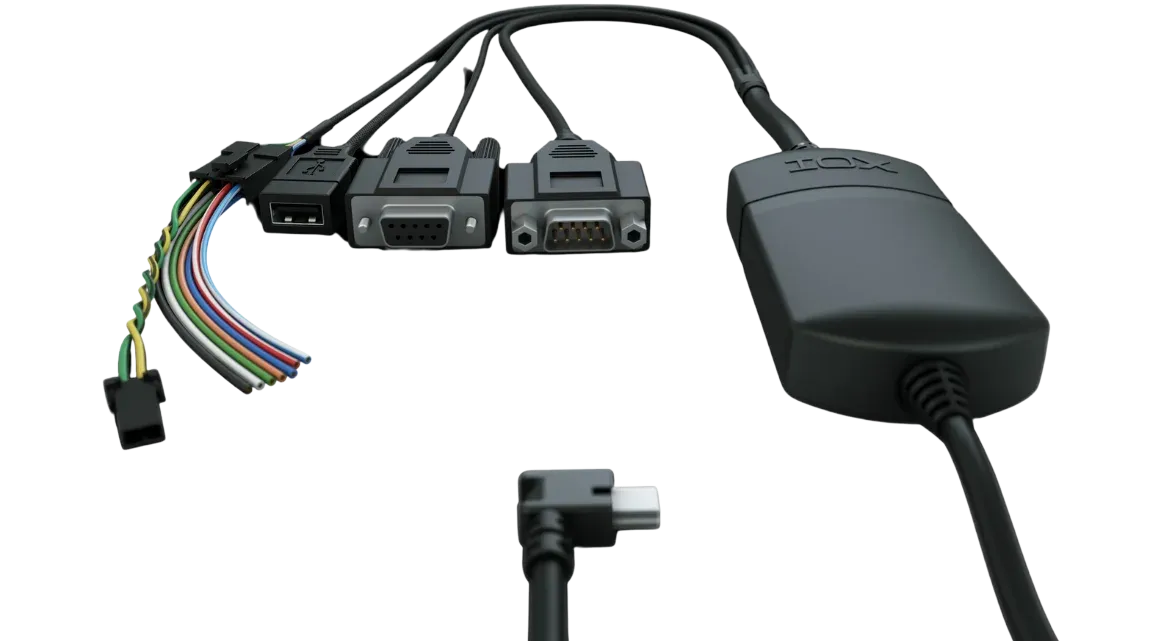
Geotab's in-vehicle devices, accessible through Geosecure, offer seamless integration via CAN, USB, RS232, or Bluetooth Low Energy interfaces. With more technology in your fleet than ever before, connecting it to your fleet management system allows you to fully harness the power of vehicle data generated in the field.
Key Benefits of Hardware Integration:
- Seamless connectivity via multiple interfaces
- Enhanced data collection and monitoring
- Support for both wired and wireless protocols
Comprehensive Fleet Control
Geosecure, as an authorised Geotab reseller, offers solutions for fleets of all sizes. Our platform delivers real-time data on vehicle location, performance, and driver behaviour through an easy-to-use web portal. With enhanced security and efficiency features, managing your fleet becomes seamless and straightforward. Telematics fleet management Brisbane, Sydney, Melbourne, Darwin is now within reach for businesses seeking smarter, data-driven solutions.
Interactive Solution Builder
Find the ideal fleet management solution for your business with Geosecure. Start building your custom solution today.
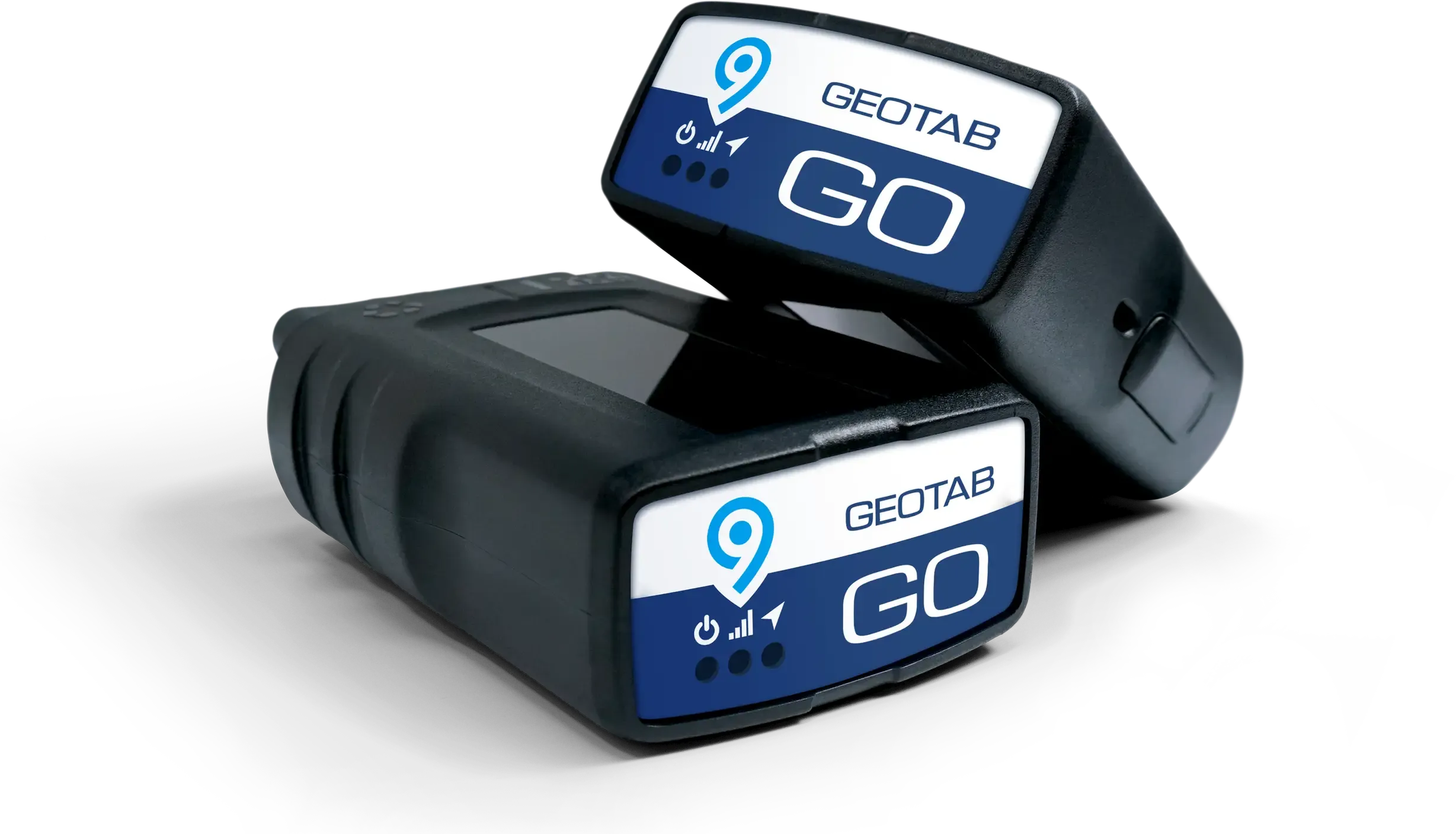
Integrated Camera Solutions
Boost safety with Geosecure's camera systems, fully integrated with Geotab's fleet telematics. Our offerings include:
- Dash cameras: Monitor road activity and driver behaviour with front and driver-facing cameras.
- In-vehicle CCTV: Comprehensive coverage with options like LED night vision for clear footage in any conditions.
- Seamless integration: Choose the right camera system for your fleet from the Geotab Marketplace, all supported by Geosecure.
Help prevent incidents and provide vital evidence when needed.

Customisable Management Reporting
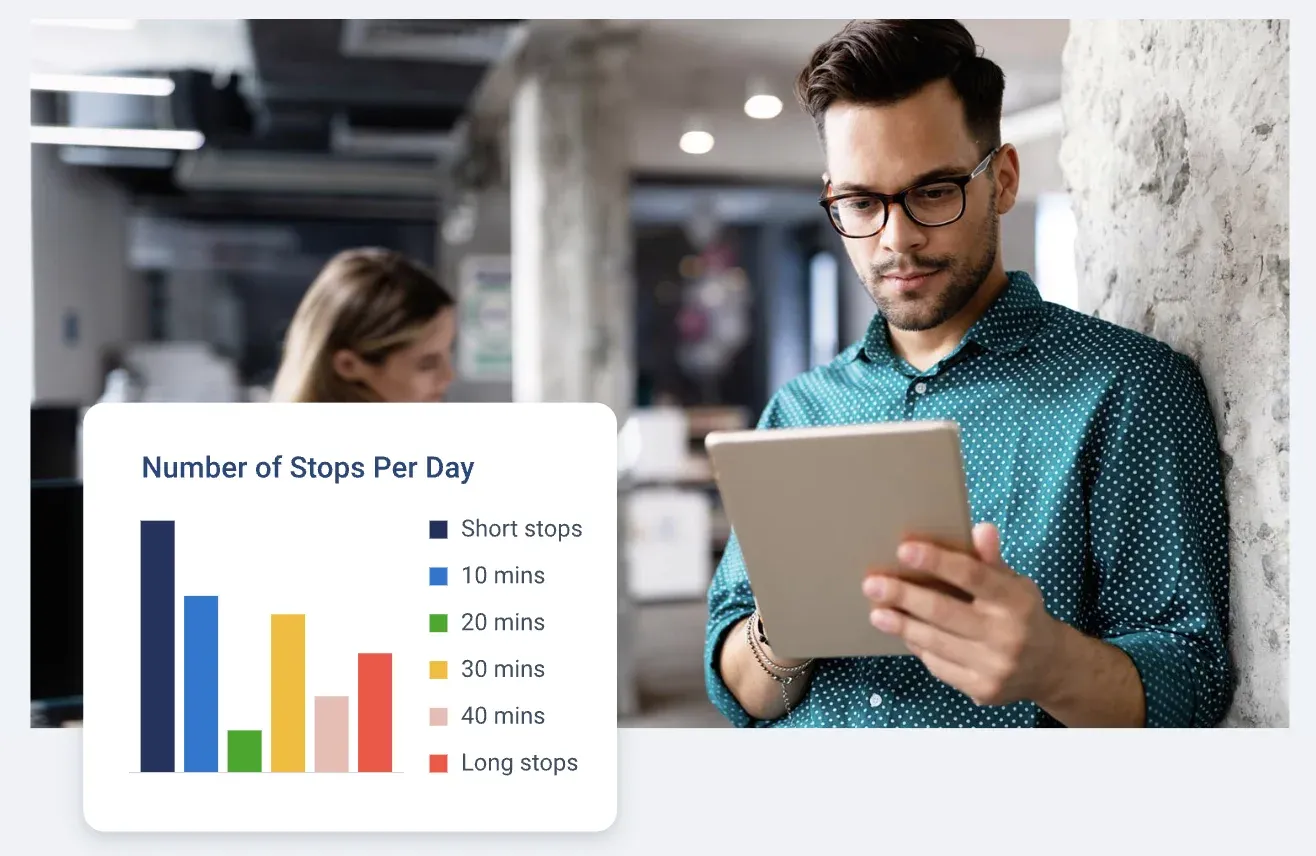
Stay informed with tailored dashboards and reports from Geotab, configured by Geosecure to meet your needs. Key features include:
- KPI fleet monitoring: Track essential metrics like fuel consumption and delivery efficiency.
- Automated reporting: Schedule regular updates directly to your inbox.
- Data-driven decisions: Use the insights to improve fleet operations and reduce costs.
Provide the clarity needed to keep your fleet performing at its best.

Electric Vehicle Management
Simplify the management of electric and traditional vehicles with Geotab's Fuel and EV Energy Usage report, available via Geosecure. Gain insights into battery usage, compare vehicle performance, and optimise charging processes to ensure your fleet runs efficiently.
Live Alerts and Exception Management
Maintain control over your fleet with live notifications and custom exception rules through Geosecure's telematics. Configure alerts for safety, productivity, and compliance issues, ensuring prompt action and continuous fleet performance improvement.
Learn More Via Our Interactive Solution Builder
Geosecure recognises the demands of the service and speciality trades industry. Our customised fleet management solutions, including driver safety software in Sydney, Brisbane, Canberra and other major cities in Australia, enhance safety, boost productivity, and reduce costs in all conditions. Trust Geosecure to keep your tradespeople on the move efficiently while ensuring their safety behind the wheel.
